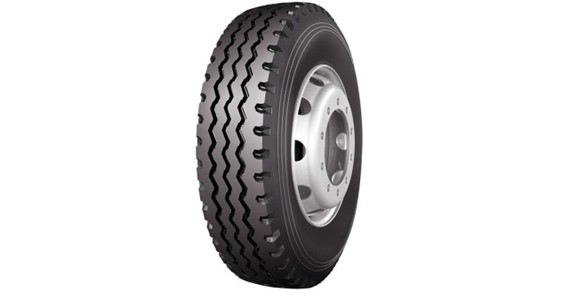Constancy tyres play a vital role in the safety and performance of your vehicle, so it’s important to make sure they are in the best condition possible. With the right maintenance, your constancy tyre can last longer, save you money, and keep your car running at its peak performance. Here are a few tips on how to maintain your constancy tyres.
Check Tyre Pressure Regularly
Having the correct tyre pressure is key to maintaining good tyre performance. You should check your tyre pressure frequently as a driver. By doing this, you’ll avoid potential risks, such as blowouts, and ensure that your tyres are in good condition.
The best way to check tyre pressure is to use a tyre pressure gauge. These can be bought from most car parts stores and are relatively inexpensive. Once you have the gauge, start by taking off the valve cap and then press the tyre pressure gauge against the valve stem. The gauge will display the current air pressure in the tyres and you can then adjust accordingly.
It’s recommended that you check the pressure of each tyre once a month when they are cold (not driven in the last few hours). This is because driving warms up the tyres, which can give a false reading on the tyre pressure gauge. If any of your tyres are low, you can add air using a compressor or an air pump at a petrol station.
Keep Your Tyres Clean
Regularly cleaning your tyres is an important part of keeping them in good condition, which in turn reduces wear and tear and helps make them look good.
Start off with a thorough wash of the vehicle from top to bottom and pay special attention to the wheels and tyres.
The use of a pressure washer can be useful to remove any dirt or debris that has accumulated on the tyre walls. Be sure to use a low-pressure setting to avoid damaging the tyre or rim.
Once the tyres have been washed, use a brush with gentle bristles to scrub the sidewalls and treads of the tyres. It’s also important to use a tyre dressing to prevent cracking and UV damage. Be sure to read and follow the instructions on the product label.
Inspect Your Tyres for Wear and Tear
It’s important to inspect your Constancy tyres regularly for signs of wear and tear. This is the only way to make sure that your tyres are safe and in good condition.
First, you should check the tread depth of your tyres. The minimum legal tread depth for all vehicles is 1.6 mm across the central three-quarters of the tyre, including around the tyre’s circumference. To make sure you get accurate readings, use a tread depth gauge. If your tyres do not meet the minimum legal tread depth, you should replace them immediately.
Next, you should look for any signs of damage or irregularities in the rubber. Look for cuts, bulges, unevenness, or other signs of wear that may have occurred due to excessive road hazards. If any of these are present, it’s time to replace the tyre as soon as possible.
Finally, check the sidewalls of your tyres. Sidewall cracks can indicate age-related wear and tear, it should be a sign that it’s time to replace the tyre.
Rotate Your Tyres Regularly
Rotating your tyres regularly is an important part of maintaining their performance and longevity. Regular tyre rotation helps to spread out the wear and tear, ensuring that all four tyres last as long as possible. It also helps keep your car’s handling balanced, providing a smoother ride and better control of your vehicle.
Generally, the front tyres should be moved to the rear axle in the same rotation (i.e. the left front tyre should move to the left rear axle, while the right front tyre should move to the right rear axle). On most vehicles, this will mean that the tyres will cross over from one side to the other (front left moving to rear right). For vehicles with non-directional tyres, you can rotate in any direction.
You should check with your owner’s manual or tyre manufacturer for specific advice on how often and how to rotate your tyres. As a general guideline, you should aim to rotate your tyres every 10,000 – 12,000 miles or at least twice a year.
Click here – How to Improve Team Efficiency and Productivity
Get Your Tyres Balanced and Aligned
Making sure your tyres are well balanced and aligned will extend their life and allow them to perform at the maximum of their ability. The balancing and alignment process involves readjusting the tyres to have the weight distributed evenly in each of them. It will be helpful for the future in preventing vibration issues and the uneven wearing of the teeth.
Your tyres can be balanced by a professional mechanic or you can use a car tyre balancer to balance them in your home. If you decide to do it yourself, make sure that you follow the manufacturer’s instructions carefully. It is also important to check your wheel alignment regularly. To do this, your car should be placed on a flat surface and measured from the centre of the wheel. If the measurements are not within the prescribed range, then it is likely that you need to adjust the alignment.
If you decide to get your tyres professionally balanced and aligned, several steps must be taken. Firstly, the technician will check the wheel bearings, brakes and suspension for wear and tear. Next, they will remove the tyres and place them on a specialised machine which will measure the balance of each tyre. This data will then be used to adjust the weights, if necessary, to ensure that all four tyres are perfectly balanced. Finally, the alignment settings will be adjusted as needed.
In Conclusion
Proper and regular maintenance of your tyres will keep them in good condition for a long period of time.






